How big a radar, anyway?
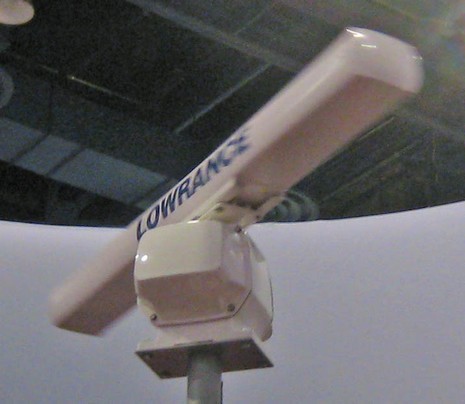
You don’t have to hang around old salts too long to realize that many consider radar to be the primary electronic navigation tool (even before solid state performance), but I’ve wondered for some time if that wasn’t somewhat an artifact of the days before good chart plotters, not to mention AIS. I don’t mean that either replaces radar, but it seems to me that the primary nav tool has become the multifunction display (which even a lil Lowrance can be these days). Here’s some thinking along similar lines from that old salt Milt Baker:
“A friend with a Nordhavn 62 asked me whether I saw advantages to installing a 20 or 25 kW radar in his boat as opposed to a 4 or 6 kW radar. Of course, everybody knows that more is better. Or is it?
Is there enough more bang for the buck for a recreational boater–even a serious one like this guy who has crossed the Atlantic and plans next to cross the Pacific–to justify the additional expense?
My own limited survey, including lots of pesky questions for the experts at boat shows, has left me with the sense that what a boat like my N47 needs is something that performs well in-close and can at least pick up big targets (weather, mountains, big ships) farther out. The ability to discriminate close-together targets (the usual examples are a pair of buoys or a tug and tow) may be another example, though the truth is that by the time most vessels get close enough to a pair or buoys or a tug and tow, even a modest 2 kW radar will do the job, and such discrimination seems to be at least as much a function of antenna size as anything else. We’ve also heard it said that that higher powered radars will “punch through” any weather far better than the wimpy stuff, and I don’t know whether that’s true or not.
In the end, perhaps the real answer is in the perception of value by the vessel’s owners and operators. Meanwhile, a lot of us have voted with out feet, some (like me) opting for less expensive 2 and 4 kW units while those with deeper pockets seem to go for the heavy-duty stuff that costs lots more and, in their opinions anyway, must surely be better.”


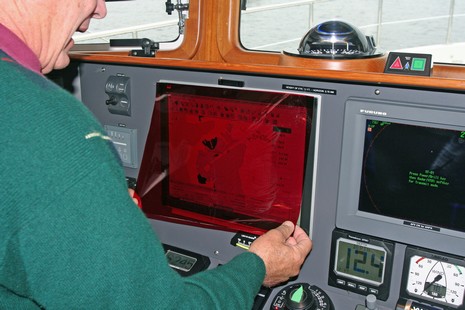
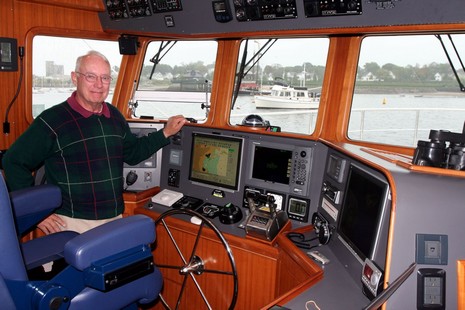
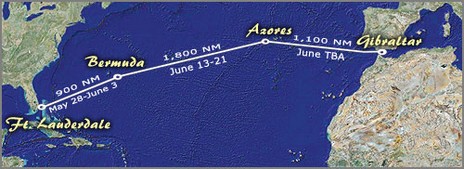
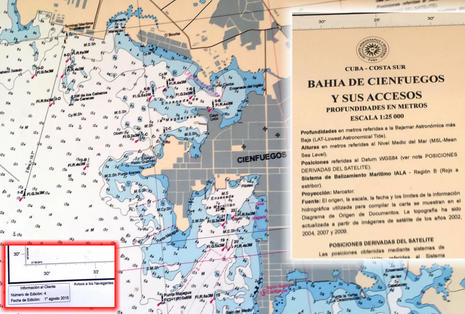







I had the pleasure of working as OOW on a 120 feet schooner fitted with a professional grade “Bridgemaster” radar with ARPA which costs around 30K Euros – it is when you have worked with stuff like this that you realize that working with yacht radars is only reading in the tea leaves in anything else than perfect calm conditions.
So if your friend is serious about radar, than he should go for the bigger version. And the horizontal resolution is linear to the size of the scanner, so here size matters…
Ben,
AIS can be great but it only can receive a signal from a vessel sending one. Although radar is indiscriminate it will give you a “return” of everything… bouys, sea walls and jetties, boats WITHOUT radar or AIS… as well as shore line profiles.
Granted AIS and a plotter gives you shorelines and nav aids… but that is NOT real world… its a chart! Tyrn off the plotter and AIS looks like a bunch of vectors in the middle of the ocean.
When all the ships and recreational boaters have AIS as well as nav aids… it will replace radar I suspect.. because it is smart than radar.
But what about the case when someone shuts their AIS off (or it fails)… a stealth vessel… it would still be picked up on radar.
We’re not there yet… but AIS is damn cool!
Thanks, guys, but I protest. DefJef is not the first to respond with the likes of “radar will give you a ‘return’ of everything”, but that’s just not true. I’ve used a lot of different radars in my life, all sizes up to maybe 12’/25kW, and to me it’s like dead reckoning. If you don’t understand what you may be missing, you can get in trouble.
Ben,
You are absolutely correct: radars are hard to read because it’s pretty raw data… and the returns can be efected by weather and so forth…. but…
I don’t think we are ready to toss the radar just yet, yet I hoping to see more AIS targets this season. I would like to see all aids to nav have AIS signals as well. That would be a hoot!
Jed
Not only would it be a hoot, it could be implemented very inexpensively using land-based “AIS bass station” transmitters, which could also be used to broadcast both “virtual” and “synthetic” AIS signals as appropriate. Taken altogether, these new frontiers in AIS ought to enhance navigational safety in many ways.
“new frontiers in AIS ought to enhance navigational safety”, would mean the following to me …
* Aids to navigation … it would be good to get an AIS signal on an aid that’s missing (in the spot it belongs) or out of position (in the spot it actually is). A synthetic AIS would be an excellent way to do this.
* Along the lines above, how about similiarly transmitting local notices to mariner’s at the spot they are relevant, for notices up to 24 months in age, since the chartplotter cartography isn’t yet possible to update frequently like a paper map is.
* My #1 wish, enough aids with actual AIS capability, transmitting local conditions like sea state, fog/visability, wind speed and direction.
Come on, now!
Isn’t there anyone reading Panbo who wants to take issue with my contending that a small 2- or 4-kw radar is all a serious yachtie needs and that we’re throwing away our money if we buy, say, 25-kw radars?
Heck, after the Panbo posting of my comments I thought Panbo would be bombarded with arguments to prove me wrong! Yet nothing heard from Furuno or the other big radar builders . . . Unbelievable!
–Milt Baker
As an agent for many “big makes” of radar i have put off answering long enough (hoping someone from them would respectively answer your question)
The simple answer is more power doesn’t always mean a better picture.
In the virtual world of a test bed or simulation range high up on a building this is true. more power = lower beam width and thus a higher target definition (yes it is a lot more complex than that but im trying not to make everyone but radar geeks loose the will to live reading this)
The simple truth is if you bolted a 12 or 25kw radar on a small boat you would probably end up with WORSE target definition than you have with a 6kw radar.
The reason for this is big radars suffer badly from reflections of objects (espc steel or other metal objects) this can cause false echos to appear on screen and confuse the operator)
I have had 1st hand experience of this where we fitted 25kw radars to some fishing vessels in the UK, because of the steel superstructure (mast, gantry, beams ect) the radar would put false echos that looked like a medium sized ship the opposing direction to the actual superstructure at about a 1 mile range very worrying in foggy conditions.
We simply changed the scanners to a 12 or even 6kw power scanner and all the reflection problems were solved.
Target definition with a professional series radar like the Furuno FR-8062 is very good i have fitted the 6kw (8062) model and this has proven (for me anyway) that its not the peak power output of the set but all to do with how the set processes the data.
On another note i have a vessel with 1x Furuno 8062 installed and a 4kw Furuno M1833-BB (NavNet) installed. Both radars pick up targets very will the 8062 is better at long range detection but this is only evident on the 12 mile plus range where the 6kw 8062 comes into its own is in detecting ships close or in rain showers the 8062 can discriminate between rain and a vessel and the auto rain filter does a very good job of fil
tering out most of the rain but leaving targets intact where as with the 4kw the navnet target definition is not as good (this can be on close range 1 – 2 miles)
I hope this helps a bit!
Plain and simple dont bolt a 25kw radar on a small boat without 1st checking what superstructures will be in the way to cause echo reflection!
Andrew
Milt,
Since I’ve sailed on the oceans for years, made numerous ocean crossings in all kinds of weather, and currently work as a radar instructor, I feel semi-qualified to reply with some general comments.
1. First the International Maritime Organization(IMO) requires that ships over a few hundred tons carry both S and X Band Radars but, they don’t give a minimum power requirement. The do however, specify a maximum allowable horizontal beamwidth for both S and X frequencies.
2. I feel that a knowledgeable radar operator could safely navigate with a 4kW Dome radar of about 4 degrees of beamwidth at minimum. The same operator could also probably drive the U.S. from coast to coast in a Pinto.
3. Higher Power and Tighter Beamwidth Radars DO greatly enhance image performance and can indeed effect navigation decisions. This goes from seeing squalls and weather at further distances to discerning targets that are close together.
4. AIS Enhances Radar and navigation but, I doubt it will ever replace it. At least not in our lifetimes.
5. Radar is an echoic process, the more energy that is placed on a target, the more likely it will return that energy to the receiver where it can be processed and displayed. In general, more power is better, and larger antennas focus that power into a smaller area, thus increasing it.
I recently had a larger Direct TV Antenna dish installed on my house to improve the performance in Rain and sometimes snow. This was so that the energy from the satellite could be focused and gathered more effectively. Yes, it made a big difference as it does in a radar.
6. Certain people want different things from Radars. I know that in some fishing nuts like to use their radars to see single birds at many miles away that are diving on bait fish. This is only done effectively with big, powerful radars that have large antennas to focus that energy.
Rick_Nav
Milt,
It’s not just about power, it’s also about antenna width.
The biggest bang for the buck is moving to a larger antenna. Moving from a 24″/4KW radome to a 40″ / 4KW open array reduces horizontal beamwidth from 3.9 degrees to 2.2 degrees with no increase in power. Moving all the way to 6’/25KW only improves that to 1.2 degrees.